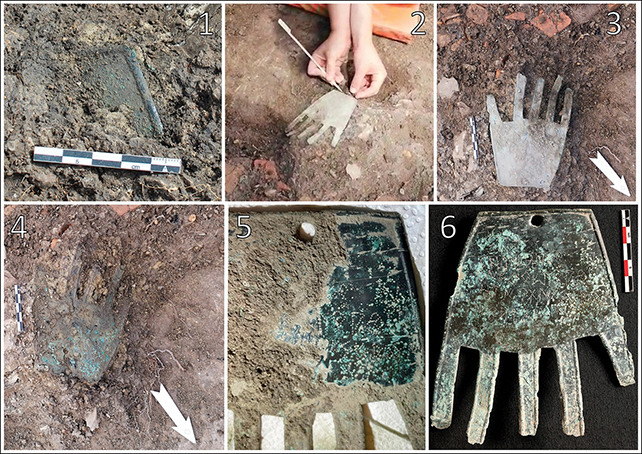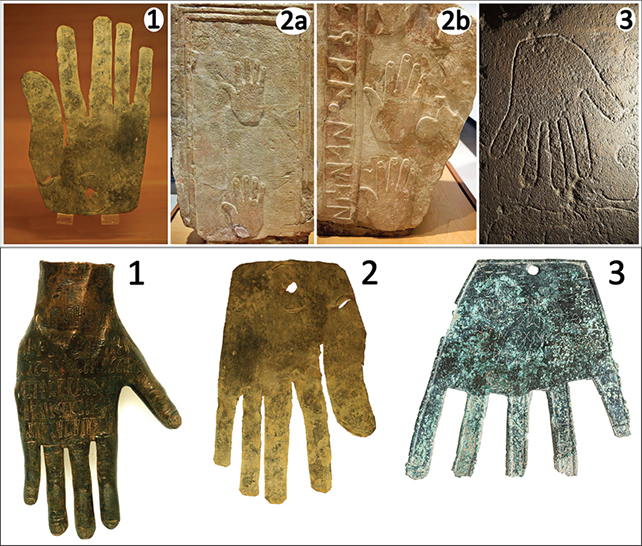Scientists found a 2000-year-old bronze hand
- February 22, 2024
- 0
Researchers have come across a surprisingly intriguing find in northern Spain: a bronze hand from the Iron Age, about 2,000 years ago, engraved with four rows of strange
Researchers have come across a surprisingly intriguing find in northern Spain: a bronze hand from the Iron Age, about 2,000 years ago, engraved with four rows of strange

Researchers have come across a surprisingly intriguing find in northern Spain: a bronze hand from the Iron Age, about 2,000 years ago, engraved with four rows of strange symbols. A new study suggests that this ancient inscription is related to ancient Paleo-Hispanic languages and may have been part of the language that evolved into Basque in what is now Spain.
It is known that the area was inhabited at the time the hand was made by the Vascon tribe, who left very few examples of writing, suggesting that they were pre-literate. This hand shows that this may not be the case.

“A detailed linguistic analysis suggests that the script represents a graphic subsystem of PaleoSpanish that shares roots with modern Basque and is the first example of Basque epigraphy,” the researchers wrote in their published paper.
The orientation of the inscription, the location of the small hole in the object, and the location where it was discovered suggest that it may have been hung near the entrance of the building. This lettering was applied using the sgraffito technique to create lines followed by larger perforated dots. It is unknown what tools were used, but researchers believe it may have been a sharp iron tool like a pencil.
Based on the words identified and comparisons with other works, researchers believe that the language consists of a “separate subsystem.” Although it is not possible to translate the entire text, researchers have found some interesting parallels with modern Basque.
One of the important connections the researchers have made is between the first word available, sorioneku, and the Basque word slivreko, meaning “luck.” This shows both the meaning of the hand’s message and its connection to the Basque language.
“The text written on this artifact, located near the entrance of a residential building, is interpreted as apotropaic, that is, a text wishing good luck,” the researchers write.
Researchers believe the hand may have some ritual or cultural significance. For example, the ancient Iberians cut off the right hands of their captives; but although it is the right hand, the use of the symbol seems more benign.

The team says that the differences in the size of the letters and some inconsistencies in the strokes indicate a rather sloppy and unplanned approach to writing. Additionally, since bronze is a common material in the region, researchers believe it may have been made where it was found.
Research continues into the Irulegi Hand, named after its location, and what it can tell us about the Vascones, especially the writings that existed before the arrival of the Romans.
“The new inscription presented here supports the growing awareness that ancient Vascons knew and used writing, at least to some degree,” the researchers wrote.
Source: Port Altele
As an experienced journalist and author, Mary has been reporting on the latest news and trends for over 5 years. With a passion for uncovering the stories behind the headlines, Mary has earned a reputation as a trusted voice in the world of journalism. Her writing style is insightful, engaging and thought-provoking, as she takes a deep dive into the most pressing issues of our time.